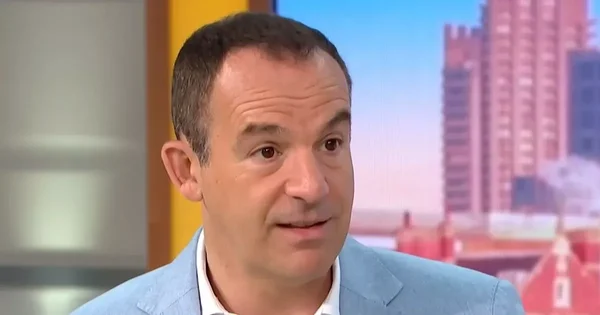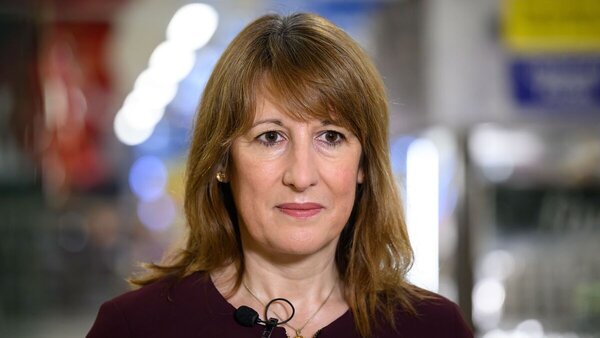Let’s Get Started...
Gift Aid sounds simple, tick a box and your donation is worth 25% more. But if you don’t pay enough tax to cover it, HMRC can send you the bill instead of topping up the charity.
Whether you’re a regular donor, retired, or your income has dropped, understanding the rules around Gift Aid is essential. This guide explains how liability works, common mistakes, and how to stay compliant while still maximising your giving. When you tick that Gift Aid box, you're making a tax declaration that could come back to bite you. Many donors don't realise this creates a legal obligation.
Gift Aid requires you to have paid enough income tax or capital gains tax to cover the amount charities reclaim. If you haven't, HMRC can come knocking. Understanding your Gift Aid responsibilities prevents nasty tax surprises later. It's a simple concept that catches out thousands each year.
Not sure if you're at risk? Pie tax tracks your donations against tax paid to prevent Gift Aid headaches. Or if you're just here to get to grips with it all, let's break it down!

How Gift Aid Actually Works
For every £1 you donate to charity with Gift Aid, the charity can claim an extra 25p from the government. This boosts your donation without costing you extra. Only donations made from your own money are eligible for Gift Aid.
This government scheme allows charities to reclaim tax on your gift. The gross donation is the total amount before tax relief, and the charity can reclaim tax on this amount. You must be a UK taxpayer and have paid sufficient UK income tax or capital gains tax in the same tax year as your donation for it to qualify for Gift Aid. Gift Aid is treated differently for tax purposes, and you must pay tax (including capital gains tax) to qualify. If you pay less income tax than the amount of Gift Aid claimed, you may have to pay the difference.
UK income, including savings interest, dividend income, investment income, taxable savings, and interest from a building society or savings account, is relevant for Gift Aid eligibility. Income or capital gains tax paid in the same tax year as your donation counts towards this requirement. The system assumes you’re a basic rate taxpayer who’s paid at least 25p in tax for every £1 you donate (the basic rate of tax). Only personal donations qualify for Gift Aid, and you must complete a Gift Aid declaration form (or declaration form) for the charity to reclaim tax.
Higher-rate taxpayers can claim even more tax relief through their Self Assessment tax return, based on the difference between the higher and basic rate. It’s a win-win for both donors and charities. A Gift Aid declaration can cover future donations unless you stop paying tax or update your declaration. If you stop paying tax, you should notify the charity to stop claiming Gift Aid.
Gift Aid Declaration: What Are You Signing Up For?
When you make a Gift Aid donation, you’re asked to complete a Gift Aid declaration form. This isn’t just a formality, it’s a legal statement confirming that you’re a UK taxpayer and that you want the charity to claim Gift Aid on your donation.
By signing the declaration, you’re allowing the charity to reclaim the basic rate of income tax or capital gains tax you’ve already paid, boosting the value of your gift at no extra cost to you.
A valid Gift Aid declaration must include your full name, home address, and a clear statement that you’ve paid enough income tax or capital gains tax
What Happens If You Gift Aid But Don't Pay Enough Tax?
If you haven’t paid sufficient tax in the same tax year as your gift aid donation, HM Revenue and Customs (HMRC) will require you to pay the difference. The charity keeps all the gift aid claimed on your donation, and HMRC will reclaim tax from you if you have not paid enough to cover the amount reclaimed for tax purposes.
You become personally responsible for covering the tax shortfall. This surprises many people who tick the Gift Aid box without considering whether they pay tax in the relevant tax year.
For example, if you donated £80 as a gift aid donation but only paid £15 in tax, the charity has gift aid claimed of £20 on your donation, but you’ve only paid £15 tax. You must pay tax to cover the amount reclaimed. If you pay less income tax than the amount reclaimed, you will owe the difference to HM Revenue. The shortfall is treated as a tax liability for tax purposes.
HMRC usually collects this through your tax code adjustment or Self Assessment return. There’s no penalty as long as you pay when asked. I once helped a retired neighbour who received an unexpected tax bill. She’d been making regular gift aid donations but her pension wasn’t taxable, creating a £120 shortfall she hadn’t anticipated.If you stop paying tax, you should notify any charities to stop claiming Gift Aid on your donations to avoid future tax liabilities.

How To Calculate If You've Paid Enough Tax
Working out if you’ve paid enough tax is straightforward. You need to have paid sufficient tax in the same tax year as your gross donation for it to qualify for Gift Aid. Only donations that meet these criteria are eligible for Gift Aid.
Simply multiply your gross donation by the basic rate of tax (currently 25%) to check if you qualify for Gift Aid. For example, if you’ve donated £100 with Gift Aid, you need to have paid at least £25 in tax that year. This includes all UK income tax and capital gains tax.
Types of income that count towards Gift Aid eligibility include income or capital gains, savings interest, dividend income, investment income, taxable savings, interest from a building society, and savings account interest. You must have sufficient income to pay tax or pay capital gains tax to qualify for Gift Aid. If you have less income tax than the amount needed, you may need to pay the difference.
Remember that Council Tax and VAT don’t count towards this total. Only direct taxes on your income and gains matter for Gift Aid purposes. If you earn less than the Personal Allowance (£12,570 for 2024/25), you probably don’t pay enough income tax to make Gift Aid declarations. This catches out many donors.
How HMRC Collects Unpaid Gift Aid Tax
When HM Revenue and Customs (HMRC) identifies that you haven’t paid enough tax to cover the Gift Aid claimed by a charity, they will reclaim tax from you. HMRC is responsible for collecting any unpaid Gift Aid tax, and you are required to pay tax to cover the amount reclaimed by the charity.
If you stop paying tax, you should notify the charity so they can stop claiming Gift Aid on your donations. The shortfall is treated as a tax liability for tax purposes. Usually, HMRC will adjust your tax code to spread the payment over the year through slightly higher monthly deductions.
For larger amounts or if you complete Self Assessment, you’ll get a tax calculation showing what you owe. This typically arrives after the tax year ends. HMRC may charge interest if you’re late paying, but they rarely apply penalties for honest Gift Aid mistakes. They understand most overclaims are unintentional. If you’re struggling to pay, contact HMRC promptly. They can often set up a manageable payment plan to help you clear the debt.
Preventing Gift Aid Problems
Only tick the Gift Aid box if you’re confident you pay sufficient tax in the same tax year to cover it. When in doubt, it’s safer to leave it unticked. If your income drops or you stop paying tax, tell your regular charities to stop claiming Gift Aid on your future donations. You should also complete a new gift aid declaration form or declaration form if your circumstances change, such as a change of address or name.
Keep track of all your charitable giving throughout the tax year. A simple spreadsheet with donation amounts and dates works effectively. Make sure your donations are made from your own money, as only these are eligible for Gift Aid.
Consider making one-off Gift Aid declarations rather than ongoing ones if your income fluctuates. An ongoing Gift Aid declaration can cover future donations unless you update or cancel it, so review your status regularly.
Always check that your donations qualify for Gift Aid and that you are eligible for Gift Aid by paying sufficient tax in the same tax year. Remember, you can donate to charity without Gift Aid. It’s better than facing an unexpected tax bill later if your tax situation changes.

Special Cases: Non-Taxpayers and Low Incomes
Pensioners living on tax-free allowances often fall into the Gift Aid trap. To qualify for Gift Aid, you must have sufficient income and pay sufficient tax in the same tax year as your donation. If you pay less income tax or do not pay capital gains tax, your donations may not be eligible for Gift Aid. Only donations that meet these criteria are eligible for Gift Aid.
Students, part-time workers, and people on maternity leave should be especially careful about Gift Aid declarations. Their income may fall below taxable thresholds, meaning they may not pay tax or pay sufficient tax to cover the Gift Aid claimed.
If you make a joint donation from a joint account, only one person can make the Gift Aid declaration. Only personal donations made from your own money qualify for Gift Aid, and the person making the declaration must complete a gift aid declaration form or declaration form. Married couples can’t use each other’s tax status for Gift Aid. Each person must have paid enough tax for their own donations to qualify for Gift Aid.
If you’ve recently retired or stopped working, review any standing orders with Gift Aid declarations attached. If you stop paying tax, you should notify charities to stop claiming Gift Aid. Your tax situation has likely changed significantly.
Final Thoughts
Gift Aid is brilliant for charities but comes with responsibilities for donors. Understanding these prevents unwelcome surprises from HMRC. Always check you've paid enough tax before ticking that Gift Aid box. This is especially important if your income is near the tax-free threshold.
If you realise you've made a mistake, contact HMRC yourself rather than waiting for them to find it. They'll appreciate your honesty and proactive approach.
Remember, Gift Aid is about redirecting tax you've already paid, not creating new tax bills. When used correctly, it's an excellent way to boost your charitable impact.
Pie tax: Simplifying Gift Aid Tax Management
Getting caught out by Gift Aid rules is completely avoidable with the right tools. Pie tax helps you stay on top of your tax position throughout the year.
The UK's first personal tax app, Pie tax, tracks your donations and tax payments in real-time. It alerts you if you're at risk of Gift Aid overclaiming before it becomes a problem. Our app brings together all your income sources and charitable donations in one place. This makes it easy to see if you've paid enough tax to cover your generosity.
For higher-rate taxpayers, we'll also help you claim the additional tax relief you're entitled to. Many people forget to claim this money back, leaving hundreds of pounds unclaimed.
Take a look at Pie tax if you'd like to keep your Gift Aid affairs in perfect order without the headache. It's the simplest way to maximise your charitable giving while staying tax-compliant.











